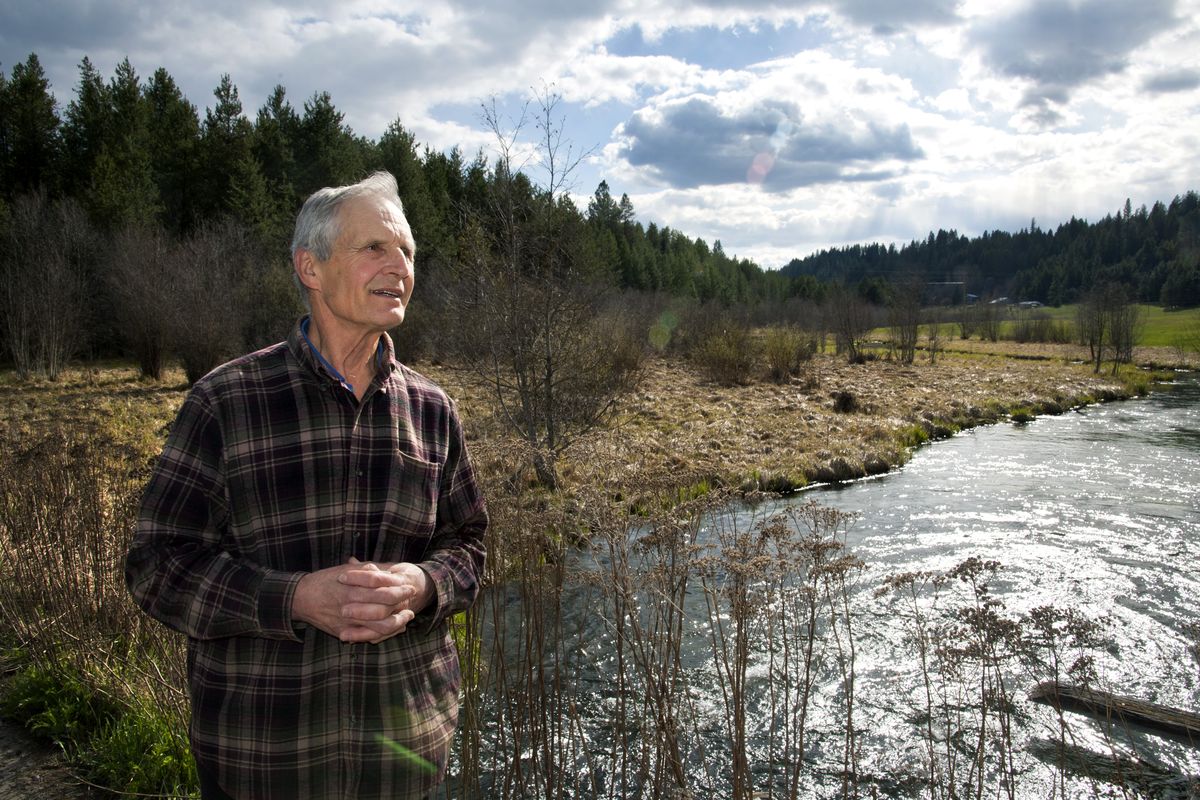Waves of change
Tougher limits on property development at the Pend Oreille River are drawing more critics than supporters

Ted Kardos Sr. has lived in Pend Oreille County for 50 years and says he’s seen the county’s lakes, streams and rivers negatively affected by development.
That’s why Kardos is supporting state-ordered restrictions that include deeper setbacks for new shoreline construction and force waterfront property owners to be more environmentally sensitive in their use of the land.
For every environmentalist like Kardos, numerous Pend Oreille County property owners object to changes in a shoreline law that hasn’t been updated since 1974.
William Clevenger, a waterfront property owner on Chain Lake on the upper stretch of the Little Spokane River, said he doesn’t see “any demonstrated benefit” in development setbacks.
But state law allows the Department of Ecology to force tougher rules on counties and cities.
Under the proposed plan, the state wants the county to increase all of its shoreline setbacks from 25 feet to as much as 200 feet in areas that are deemed to be in a natural state.
Homes would have setbacks of 50 or 100 feet depending on whether they are rural or urban. The setbacks are measured horizontally from the ordinary high-water mark.
The law also calls for no loss of environmental function as a result of development. Thus, docks, new buildings and bulkheads and other shoreline stabilization methods would be regulated with stricter environmental standards.
Jaime Short, of the state Department of Ecology, said research shows that shorelines function as a key part of the environment, providing important habitat for insects, birds and other animals.
In addition, the trees and shrubs of a natural shoreline help prevent erosion and sedimentation and keep the water cooler in the summer.
An extensive survey and inventory of Pend Oreille County’s 27,863 acres of shoreline shows the county has widespread problems with water pollution, sedimentation, invasive plants, erosion, flood damage, deforestation and high water temperature.
While some of the pollution comes from upstream in Idaho and Montana, Pend Oreille County’s shorelines are studded with examples of illegal activity as well as lax practices.
Mike Lithgow, Pend Oreille County’s planning director, said among the more notable violators is a property owner who built a wall of tires on his Pend Oreille River shoreline to stop erosion.
“It’s not new,” he said of the violations. “It’s an ongoing challenge.”
Former Pend Oreille County Commissioner Diane Wear can point to numerous violations from her waterfront home at Sacheen Lake.
One of her neighbors was fined $1,000 for building an illegal retaining wall with rock pieces taken from a highway project.
Wear pointed across the lake at an illegal boat access area and beach built by a former county commissioner, who she said ran a backhoe into the lake.
“It is tunnel vision,” Wear said of the violations. Some property owners believe the land is theirs to do with as they wish, and “the heck with you.”
But many residents at Sacheen Lake understand the need for protecting the water. Lake residents are going to pay to install a sewer system to stop septic waste from getting into the lake, Wear said.
Wear, a Democrat, said controversy over the shoreline changes played a role in her re-election defeat last year. Commissioners voted to adopt the shoreline update last October under state requirements.
Wear’s opponent, Republican Commissioner Karen Skoog, questioned a central premise of the state shoreline law that requires “no net loss” of environmental function, calling it “very vague.”
The county received a $450,000 grant from the state to pay for the planning work needed for the new shoreline master program, which includes restoration plans. Cities and towns with shorelines and the Kalispel Tribe participated in the update.
Pend Oreille County is not alone in being forced to accept stricter shoreline rules. The state told Spokane County the same thing five years ago; Spokane’s update was finished earlier this year.
Medical Lake, Millwood and Spokane Valley are all working on shoreline updates, as are nearly 200 jurisdictions statewide. Updates are required by the end of 2014. The Medical Lake plan is awaiting final approval by the director of the Department of Ecology, and the city of Spokane completed its plan three years ago.
Pend Oreille County is getting help keeping an eye on the Pend Oreille River shoreline through the federal relicensing agreement for Box Canyon Dam, which requires annual river inspections.
In addition, the state provided a $250,000 water quality grant to rebuild the shoreline between Cusick and Usk in an environmentally sensitive manner after flooding triggered erosion, in part to show residents the right way to do it. Rock was dropped at the bottom of the bank and soil was spread above, anchored with a natural fiber mat. The repair work was planted with native shrubs, including willows.
“Rip-rap – that big chunky rock – is not good habitat,” said Brook Beeler, an Ecology Department spokeswoman in Spokane.
Some property owners aren’t accepting the proposed changes without a fight. A group formed a Pend Oreille County chapter of the Citizens’ Alliance for Property Rights and flooded commissioners with comments prior to the vote on the update last October and protested at the county courthouse.
“I’m afraid it’s going to be a nail in the coffin” of economic growth, said Tim Ibbetson, who has been leading the fight against tougher restrictions.
He said deeper development setbacks on his property near Blueslide on the Pend Oreille River will reduce its potential value.
During a tour of the Little Spokane River last week, Kardos, the longtime Pend Oreille County resident, pointed out the loss of wetlands, the proliferation of non-native plants, changes in the river channel and deforestation.
What was once a highly productive trout stream is now at a fraction of its potential, he said.
“When you see what’s left today, it’s disheartening,” he said.